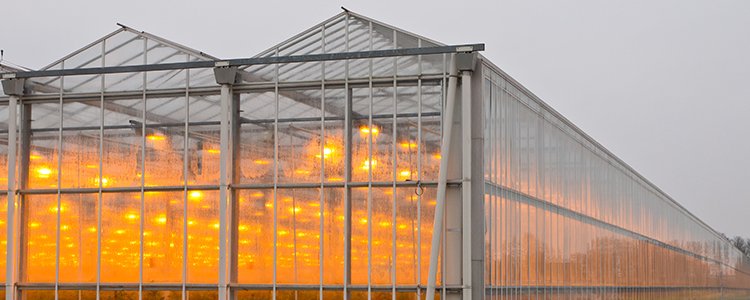The global cannabis market is expected to hit $47 billion by 2025. This is an industry that’s growing at breakneck speed, in part fueled by automation technology that is changing the way people grow and market the popular plant.
If you’re in the cannabis industry, and you haven’t yet automated your processes, it’s not too late to catch up to the competition by implementing an ERP system.
A number of specialized cannabis ERP companies have emerged recently, and many Tier I and Tier II ERP vendors also provide specialized functionality for the cannabis industry.
Instead of listing all of these vendors, we’re going to provide some general advice around what to look for in a cannabis ERP system. Let’s take a look at the top features to look for as you begin your search.
The 2024 Top 10 ERP Systems Report
What vendors are considering for your ERP implementation? This list is a helpful starting point.
Why You Need an ERP System for Your Cannabis Business
The right technology can help leaders in the cannabis and hemp industries set a solid foundation for continued growth. At the core of this transformation is knowing how to harness and utilize the vast quantities of data available at every touchpoint.
From the field to the final sale, a typical cannabis operation gathers incredible amounts of information nearly every second. Is your company analyzing those insights to improve your product? If not, a cannabis ERP system can help.
This is a specialized type of ERP software built to help industry stakeholders gather, organize and manage their critical data points in one, centralized database. In addition to standard functions, such as accounting, HR and sales, a cannabis-centric system also includes unique components meant to capture data on industry-specific activities, including growing and cultivation.
Centralizing this data and making it easily accessible prevents silos from forming within a cannabis operation. It also increases visibility and transparency across the supply chain.
Why does such visibility matter? Not only does it ensure quality, but it allows you to monitor, track and record every step the cannabis takes as it travels from its origin to its destination. Especially if you have multiple entities under your parent company, this type of oversight is critical.
4 Features to Look for in a Cannabis ERP System
Are you ready to select an ERP system for your cannabis business? If so, it won’t take long to realize there are many different platforms built around your needs. Here are a few features to look for as you weigh your options.
1. Virtual Greenhouse Management
An ERP solution with an integrated cultivation management system (CMS) allows cannabis leaders to remotely manage critical aspects of their greenhouse operations. From overseeing growing conditions and regulatory compliance to adjusting labor needs, this approach enables timely decision-making and more accurate monitoring.
It also streamlines operations across the entire supply chain, so managers can track every stage of plant growth, harvesting and yields, all with a continuous, uninterrupted stream of data.
Here are a few features to look for when evaluating CMS integration:
Growing Data
You need the ability to keep a real-time eye on the growth of your cannabis plants. A robust CMS system will automatically keep track of all stages of strain-specific plant development, including metrics on how the following factors affect overall yield:
- Moisture content
- Nutrient or fertilizer applications
- Feeding schedules
- Pruning schedules
With this data, you can learn how to replicate ideal growing conditions in the future, improving the size, quality and profitability of your yield.
Regulatory Compliance
State regulations require cannabis growers to closely track their plant inventories throughout every stage of their lifecycle. This means knowing exactly how your plants are thriving at any given time, from the initial vegetative stage to the final harvesting stage.
Once you establish a growth schedule in your CMS and, if necessary, integrate it with your ERP system, this compliance activity becomes much easier to manage. Each plant is assigned an individual ID number and each batch has a name, so you’re always up-to-date on the plants’ condition.
The different points you can track include:
- Total number of plants
- Plant genetics (terpene profiles, THC and CBD potency)
- Batch clone potency
- Container type
- Wet and dry weight
- Facility locations
- Degrees of waste or loss
Once captured, you can automatically transfer this data to streamline regulatory reporting. You can also use it to plan for future productions.

2. Production Management
A well-oiled cannabis operation requires efficient scheduling and production management. With the right ERP software, you can optimize these workflows to improve productivity and increase output.
Let’s take a look at a few production-specific tools to consider:
Resource Allocation
An ERP system can take into account various metrics to ensure appropriate resource allocation across the supply chain, including:
- Production capacity
- Material availability
- Machine availability
- Labor availability
In addition, it also facilitates production planning by identifying which particular strains are in demand, as well as which products are proven to be the most profitable.
Quality Assurance
With ERP automation, you can document food safety measures at every step of the supply chain. If you’re in the edibles sector, quality assurance enables accurate regulatory reporting and mitigates contamination concerns.
You can also use the information contained in the ERP to conduct mock recall procedures, so you’re ready and equipped in the event of a real one.
We recommend looking for software that allows you to easily maintain recipe and formulation data, so you can create a consistent product that meets customer demands for taste, potency and results.
3. Inventory Control
Any cannabis ERP system you select should also include sophisticated functions for inventory management. This is required to meet compliance and prevent theft.
With the right platform, you can scan each plant at its original planting and track its every move through growing and harvesting. Then, you can continue monitoring it through the final sale.
4. Financial Reporting
In addition to the growing side of this industry, there are also many back-end, administrative functions that keep a business going. For this reason, the ERP software you choose should be equipped with the accounting functions you need.
This includes tools such as:
- Tax and financial reporting
- Real-time cost analyses (COGS)
This data facilitates report development and expedites invoices and purchase orders, eliminating the risk of human error.
Find the Right Cannabis ERP System
In an industry marked by monumental growth, mounting competition and shrinking margins, it pays to invest in a cannabis ERP system that can automate and facilitate core business functions.
Our team of ERP consultants can help you evaluate your options against this list to ensure it includes the features and functions you need. Get in touch with us below for ERP selection guidance.














